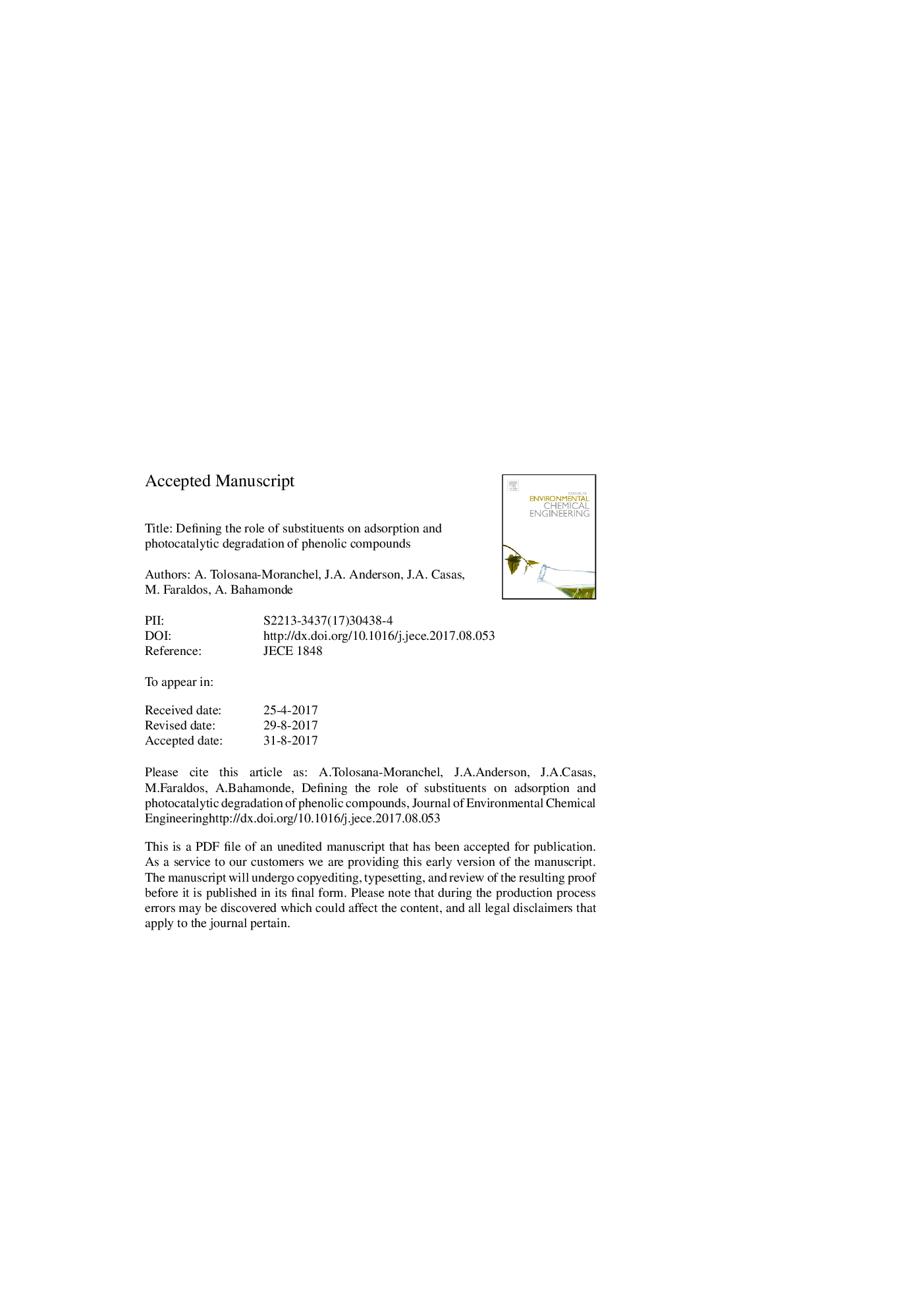| Article ID | Journal | Published Year | Pages | File Type |
|---|---|---|---|---|
| 6664291 | Journal of Environmental Chemical Engineering | 2017 | 28 Pages |
Abstract
The influence of adsorption behavior and the chemical nature of different para-positioned substituents was analyzed in the photocatalytic decomposition of phenol and other phenolic compounds (4-chlorophenol, 4-nitrophenol and methyl-p-hydroxybenzoato). Five commercial TiO2 photocatalysts, with differences in their physico-chemical properties, were selected for comparative purpose: P25 Aeroxide®, P25/20 VP Aeroperl® and P90 Aeroxide®, provided by Evonik Company, and UV 100 from Hombikak and PC 105 from Crystal Global. On the basis of adsorption isotherms it can be concluded that the maximum uptake of the different organic compounds are directly related to the specific surface area and surface acidity of the titania. Infrared spectroscopy in diffuse reflectance mode (DRIFTS) shows that the phenolic compounds are mainly adsorbed via interactions between the phenolic OH group and TiO2 surface leading to formation of Ti-phenolates and TiOH. The photocatalytic removal of the phenolic compounds for the different titania samples does not follow a ranking based on the extent of adsorption whereas the initial photodegradation rate was strongly dependent on the chemical nature of the substituent, and could be correlated with the corresponding Hammett constant.
Related Topics
Physical Sciences and Engineering
Chemical Engineering
Chemical Engineering (General)
Authors
A. Tolosana-Moranchel, J.A. Anderson, J.A. Casas, M. Faraldos, A. Bahamonde,
